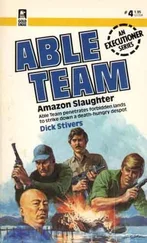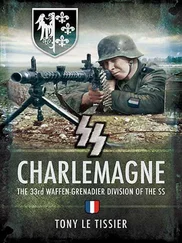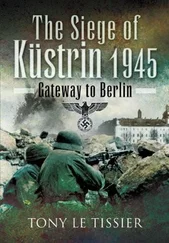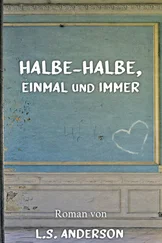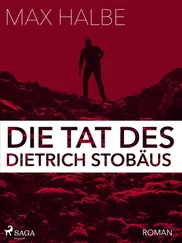SS-Major Hartrampf, commanding 502nd SS Heavy Panzer Battalion, maintained a good grip on his lead tanks and any resistance encountered was soon overcome. Whenever there was a hold-up, Hartrampf would appear in his APC and get his tanks moving again, though he later recalled that XI SS Panzer Corps, more often than he would have liked, sent the radioed question: ‘Where are the leading tanks?’ [2] Tieke, Das Ende zwischen Oder und Elbe , p. 320.
SS Lieutenant Bärmann, driving along in an SPG, reported:
As it became light on 29 April, we drove on cautiously and soon came to a barrier with two T-34s behind it. They were immediately engaged by the Tigers driving behind us. I called down below: ‘Two o’clock right – aim!’ Together, we overcame the anti-tank guns and tanks.
Spirits improved. At the autobahn west of Halbe, we came up against another anti-tank barrier that we also overcame. With daylight, the Russian ground-attack aircraft began attacking, but our self-propelled Flak fired flat out so that they were unable to aim their bombs. [3] Ibid ., p. 323.
The lead tanks of 502nd SS Heavy Panzer Battalion reached the Cottbus–Berlin autobahn at dawn and came under fire. One or two well concealed Russian tanks engaged the German vehicles as soon as they approached the autobahn, but SS-Major Hartrampf was on the spot and gave orders for an attack by a Tiger and a hastily assembled infantry storm troop, which soon put them out of action. The lead tanks then crossed the autobahn and waited in the woods opposite for the others to catch up. However, although the first group of opposing tanks had been dealt with, others firing from further off along the autobahn opened up as soon as a German vehicle approached. Even so General Busse managed to get across in his command APC and drove on to the rendezvous at the Massow forest warden’s lodge. [4] Ibid ., p. 322.
Rudi Lindner’s account of this period continued:
It slowly became light as we slipped along the track under cover of the wood. As this led to the west, it had to lead to the autobahn. Suddenly in front of us was the nose of an armoured vehicle. ‘Take cover! One man forward to reconnoitre!’
After ten minutes came the report that it was an assault gun. Its crew, who had their dead commander aboard, were about to cross the autobahn under cover of the morning haze, but did not know if the woods opposite were occupied by the enemy or not, and were also afraid that there might be flanking anti-tank gun fire along the autobahn, so they were happy to see us and for us to find out for them. A brief order: ‘Under simultaneous covering fire, over the autobahn in bounds.’ We were soon on the other side. All we found on the other side were empty foxholes and dead bodies. We welcomed the chance to drive our assault gun several kilometres in the westerly direction ordered for the break-out to the assembly point at the forest warden’s lodge at Massow. We found ourselves on a woodland track on which soldiers were moving along in groups of all sizes.
We soon arrived at 9th Army’s assembly point, reported in and received 16 men’s worth of rations and ammunition to divide among the remaining five of us, sufficient to eat ourselves full once more, for we did not know when we would get any more.
Here the extent of the tragedy at Halbe quickly became apparent. Many comrades were missing from our unit, the majority of our company of Panzergrenadiers having been killed or wounded; there was no accurate account.
We were again allocated as tank escorts for the coming march. We were to advance on foot with the task of screening ahead and on the flanks. The men of our little unit could now keep together and keep an eye on each other, as we were now independent and no longer bound to the tanks.
However, we soon noticed that there was no longer a strong overall command. A leaderless mass of soldiers and refugees was wandering through the woods. Military discipline and comradeship had fallen by the wayside. The majority of soldiers of all ranks moved like sheep around and behind the tanks, trying to get aboard whenever they stopped. Just as in Halbe, hits from anti-tank, artillery and mortar fire, as well as the many air attacks, had had a catastrophic effect on soldiers and civilians alike. Each impact cost ten to twenty times the number of dead and wounded as it would have done under normal combat conditions. At first the wounded were tended to and the dead laid aside in the woods, but later, especially at night, this ceased. People became more and more numbed. Hunger and fatigue added to this, and only the fear of becoming prisoners of the Russians drove the soldiers on, regardless of casualties.
This stream of humanity moved not only along the woodland tracks but also left and right through the woods, so that our task of securing the tanks against enemy close-quarter engagement was no longer necessary.
Not from overwhelming bravery, but out of old combat experience, our practice was to use every halt to get further ahead. We knew: ‘He who does not get through the enemy cordon within five to ten minutes once it is breached and uses the gap will get the concentrated fire of the Russian weapons on the breakthrough point.’
This was the motto we kept to, and whenever the call was given: ‘Infantry forward! Tanks forward!’ that was how we acted, whereas, in such a situation, the majority of soldiers of all ranks would often press back into the woods.
The advantage for us was that the way forward was free for the unfortunately few remaining soldiers and ever fewer tank crews. Each tank crew in 9th Army’s breakthrough to the west was putting its life on the line with the danger of being shot up time and time again, and each time had to face up to this and not pull back into the woods. [5] Lindner in the author’s Death Was Our Companion .
The survivors of the main break-out group began gathering at dawn around the Massow forest warden’s lodge and continued to arrive in an endless stream of soldiers and civilians. Some soldiers were able to rejoin the units they had become separated from during the break-out. Major-General Hölz, chief of staff of 9th Army, and SS-General Kleinheisterkamp, commander of XI SS Panzer Corps, failed to appear. [6] Hölz had been promoted from colonel to major-general on 23 April.
General Willy Langkeit’s liaison officer from the Panzergrenadier Division Kurmark also turned up and reported that the general’s command APC had been hit, but that the general had got out and gone off in another direction. He had reportedly been captured. Some 4,000–5,000 people had lost their lives during the night and countless numbers were wounded. [7] Lakowski/Stich, Der Kessel von Halbe 1945 , pp. 121–2; Tieke, Das Ende zwischen Oder und Elbe , p. 323. According to his family, Langkeit surrendered to the British on 22 May, so it seems he may have either avoided capture by the Soviets, or managed to escape. (Letter to the author).
The assembly area was made secure while General Busse consulted with the unit commanders over their next move. SS-Major Hartrampf proposed the Wunder forest warden’s lodge, west of the Wünsdorf– Baruth road as their next rendezvous, and that was accepted. Fresh orders were issued and the group set off again.
SS-Lieutenant Bärmann continued his account:
While we were securing the assembly area at Massow, General Busse drove up in his APC. In reply to my question how far we had to go to get to Wenck’s Army, he replied sixty kilometres. Our fuel would not last sixty kilometres, as was the case with just about all the armoured vehicles. He said that when necessary we would have to obtain fuel by force, as the armour had to stay in the lead if 9th Army was to get through. [8] Tieke, Das Ende zwischen Oder und Elbe , p. 323.
Читать дальше

